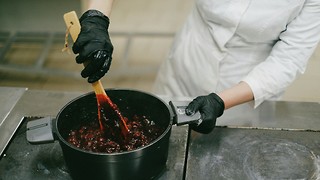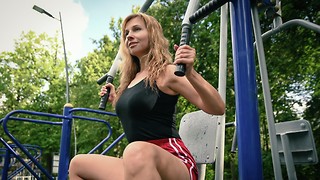No Distance Left to Run
Arts Picturehouse

No Distance Left to Run opens with slowmo shots of one of Blur’s comeback tour concerts, thousands of appreciative hands thrust into the air. The sweat-slicked silhouette of Damon Albarn raises its own arm into the air in a weary but triumphant salute. The camera-work is up-close and gritty, with some tremendous live shots, of then and now. This grittiness is a stylized aesthetic, but it’s absolutely the right medium for the grizzled, emotional reunion of a band who are self-professedly “like brothers. We have that close but detached relationship that only brothers can have.”
Having traversed the deserted stadiums of London where Blur once played, the camera settles in the studio where Blur are rehearsing, and a journalist begins an interview in front of another camera. This meta-layering of the usual documentarial tricks of interview, pan-out shots and zooming in to a pseudo-keyhole intimacy, seems again to be a stylized but nonetheless effective tribute to Blur’s own youthful ground-level anarchy; their lyrical efforts to peel back the layers of social institutions. In interview, Blur admit that “we always needed something to kick against”. Damon Albarn and Graham Coxon tell the story of their Essex upbringing in the “burgeoning Thatcher days”, and their discomfort with the institutions in and around which they grew up. Individual narration is interspersed with wider frames of the whole band, gradually building up a bigger and very believable picture of the internal dynamics within the group. Such insights into the tricky relationship between Damon and Graham are outdone only by the rush of 90s nostalgia that the film induces.
The film work pieces together slices of the past that corroborate the present very sleekly. “A band is a gang,” says Graham. Back then, on their American tour, there was one point when they all had a black eye from each other. The camera stays in tandem throughout. From wild young things – when Graham went to pubs in search of painters and decorators (and booze), and the aggressive competition with Oasis – to the more mature musicians who wanted “to make music that scares people again”: ballsy, visceral, straight-to-the-heart rock music. Then through their split – when Graham once spent an entire day hiding from Damon at London Zoo – to the reunion which was, more than anything, about “getting my friends back” (Graham). This is a highly polished, slightly evasive (there is no mention of Albarn’s drug problems, or the support for Blair in his early days) but shrewd, engaging, even heart-warming story of reunion; not just of a band, but of fractured friendships.
 News / Head of Education Faculty calls for ‘rewilding’ education system30 September 2025
News / Head of Education Faculty calls for ‘rewilding’ education system30 September 2025 Interviews / Joyce Mau’s time as Law Society president29 September 2025
Interviews / Joyce Mau’s time as Law Society president29 September 2025 Comment / Find people in Cambridge you disagree with29 September 2025
Comment / Find people in Cambridge you disagree with29 September 2025 News / Tompkins Table 2025: Trinity widens gap on Christ’s19 August 2025
News / Tompkins Table 2025: Trinity widens gap on Christ’s19 August 2025 Features / Why are there so few Scots at Cambridge?1 October 2025
Features / Why are there so few Scots at Cambridge?1 October 2025








